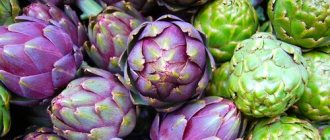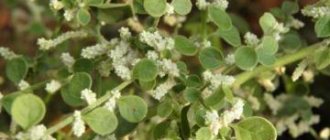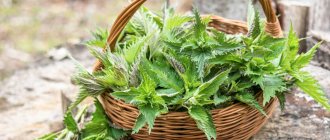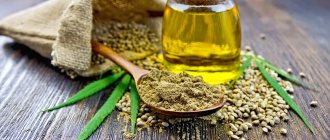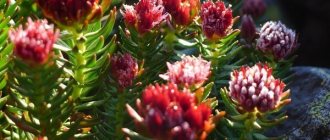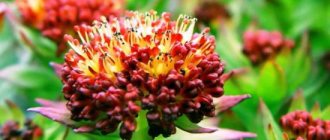In meadows, forest edges and clearings of central Russia, the Urals, Altai, the Far East, Kamchatka and Sakhalin in June - July, a tall plant (up to 80 cm) with a beautiful flower resembling a fluffy white panicle is often found. The flower consists of small flowers with five or six petals, emitting a pleasant smell with the aroma of vanilla, honey, and almonds. The reverse side of the carved leaves is pubescent and soft to the touch.
This beautiful perennial plant is called meadowsweet (common meadowsweet), there are about 15 species. The most common species in Russia are vyazolifolia, six-petalled, ordinary, palmate, and Kamchatka.
The rhizome has a thickening on the roots in the form of small nodules (they are also called nuts).
The plant is unpretentious, so it is in demand when decorating a personal plot.
The beneficial properties of meadowsweet, and absolutely all parts, have been known for a long time, and herbalists always give it a place of honor among other herbs.
Composition and beneficial properties of the plant
Vitamin C improves the condition of the immune system, participates in the restoration of damaged tissue, and has a positive effect on the nervous system.
Flavonoids help relieve inflammation, resist viruses, improve the flow of bile, relieve spasms, have an anticarcinogenic, antioxidant, diuretic effect, and promote the healing of ulcers.
Tannins have an antioxidant, astringent effect and help stop bleeding.
Salicylic acid relieves inflammation and reduces tissue swelling.
Phenol compounds stimulate the functioning of the kidneys and gall bladder, improve the functioning of the immune system, act as an antiseptic, antispasmodic, and have a diuretic effect.
Phenolcarboxylic acids improve the functioning of the liver and gallbladder, kidneys, and relieve inflammation.
Catechins are involved in neutralizing free radicals and have an antibacterial effect.
Essential oils participate in the normalization of the gastrointestinal tract, have an antitussive effect, and improve heart function.
Starch has an enveloping effect and saturates with energy.
Glycosides give a laxative, diuretic effect, calm the nervous system, dilate blood vessels, and have an antimicrobial effect.
Fatty acids normalize metabolism and cell restoration.
Wax has an astringent and bactericidal effect.
Indications for use of meadowsweet
Substances in the composition of meadowsweet, the beneficial properties and contraindications of which we are studying, have a pronounced effect, therefore drugs with it are used in the treatment of such pathologies:
- respiratory diseases (bronchitis, pneumonia, bronchial asthma);
- gastrointestinal diseases (intestinal atony, intestinal spasms, dysentery, diarrhea);
- diabetes;
- hypertension;
- epilepsy;
- skin diseases (purulent wounds, psoriasis, herpes, diaper rash, bedsores, boils);
- hepatitis;
- inflammatory processes of the genitourinary system;
- colds;
- joint diseases (arthritis, arthrosis);
- headaches, migraine;
- helminthic infestation;
- angina;
- inflammation of the sciatic, trigeminal, facial nerve.
Meadowsweet varieties
There are about two dozen varieties of meadowsweet. The medicinal properties and contraindications of each differ slightly.
In the European part of Russia, in the territory of Siberia and the Caucasus, meadowsweet is widespread. This variety is famous for the fact that its flowers help relieve hangover syndrome. In addition, it is also used for urolithiasis.
The most common meadowsweet is the common meadowsweet. Its inflorescences consist of a large number of small white flowers. This is a wonderful honey plant, a delicacy for bees. Due to its compactness, it is used for decorating flower beds and flower beds. Very attractive fern-like leaves and beautiful inflorescences make this meadowsweet a real decoration of the garden. Photos of it can often be found on the pages of landscape design magazines. It rightfully takes its place among the most beautiful plants.
The six-petalled meadowsweet is named so due to its flowers, which have 6 petals. The inflorescences are white or pink in color and have an amazing honey smell. The stem of this plant, the lower part of which is covered with ovate leaves, reaches a height of 170 cm.
Red meadowsweet is native to North America. The powerful reddish stem of this plant sometimes reaches a height of up to 2 m. Bright fruits adorn the red meadowsweet until late autumn. This variety is better known as decorative meadowsweet. Its medicinal properties and contraindications are described very little. The plant is very resistant to low temperatures and can easily tolerate even 35-degree frosts.
When meadowsweet should not be used
Not only does meadowsweet have beneficial properties. And there are also contraindications. If they are not taken into account, this can provoke a deterioration in the general condition of the body. Contraindications include:
- individual intolerance;
- tendency to constipation (astringent properties will aggravate the situation);
- low pressure;
- low platelet count (may cause bleeding);
- pregnancy.
To avoid unwanted situations, you need to consult a doctor.
Reviews from real people
What do people who have experienced its properties say about meadowsweet?
Feedback on the forum
Feedback on the forum
Feedback on the forum
There are many reviews and they are all positive.
Application of meadowsweet roots and rhizomes
A distinctive feature of the underground part of meadowsweet is the high content of tannins.
A powder is made from the roots and used in decoctions, infusions and tinctures, and teas.
The use of meadowsweet roots in preparations helps:
- for bleeding (accelerates the process of blood clotting);
- reducing pain from rheumatism, gout;
- reduce body temperature;
- normalize the functioning of the nervous system;
- with helminthic infestation;
- in the prevention of thrombophlebitis;
- during the recovery period after a heart attack;
- in the treatment of pustular skin diseases.
An ointment for arthritis and rheumatic pain is prepared as follows: 25 g of root, ground into powder, mixed with 100 g of butter (butter) or petroleum jelly, rubbed into the sore spot, and wrapped.
A decoction of the roots for recovery after a heart attack can be prepared as follows. Using a water bath, infuse 20 g of roots in one liter of water (15-20 minutes). Drink 50 ml four times a day.
Can be used in compresses for purulent skin diseases.
Ointment for burns and ulcers: leave root powder (1 part) and vegetable oil (5 parts) for 12 hours, squeeze out, apply a compress for 6-7 hours. Before mixing, sterilize the oil in a bottle (in water over low heat).
Features of each part of the whitehead
All parts have healing capabilities: stem, flowers, roots. The root is suitable for eliminating symptoms of hypertension, nervous disorders, and diseases of the respiratory system.
A tincture of the root removes worms. In complex collections, the rhizome is used as a sedative, antispasmodic, and analgesic. They also help with bleeding. Pharmacists use the root to prepare herbal medicines (extract, extract).
Herbal tea will relieve fatigue and normalize sleep. It is also indicated for rhinitis. The powder is useful for treating burns and wounds.
Flower teas are used as a diuretic, astringent, diaphoretic, and anthelmintic. The drink relieves pain in the gastrointestinal tract, is effective in heart failure, relieves nerve spasms and migraines.
Uses of seeds and flowers
During the cold season, it is important how colds are prevented. For preventive purposes, meadowsweet inflorescences are used in an infusion.
Meadowsweet flowers strengthen the immune system and have an antimicrobial effect, therefore they are successfully used in the prevention of influenza and acute respiratory infections.
The infusion of flowers is prepared as follows. Fill a jar (500 ml) tightly with flowers to half the volume, fill with cold water, leave for 12 hours. To preserve the infusion, add 25 g of calendula tincture (pharmaceutical). Add to tea, fruit drink, compote.
Ointment for psoriasis: mix 10 g of crushed flowers well with 40 g of Vaseline, rub into problem areas.
Tincture of meadowsweet seeds after a stroke: keep 100 g of vodka and 2 teaspoons of seeds without access to light for 10 days, take 2 teaspoons with meals.
Collection, drying, storage
Meadowsweet grows in Western Asia, the Caucasus, and Siberia. Therefore, we can say that the collection of medicinal raw materials can be carried out everywhere. Meadowsweet is a “regular” in marshy areas, water meadows and shores of reservoirs, and floodplain forests.
That is, she loves shady areas and moist soils. Of particular value are the “tops” and “roots” (inflorescences and rhizomes). The collection of raw materials is carried out at different times: inflorescences - in June-July, rhizomes - in September-October.
Drying of raw materials is carried out in the shade and in a draft (in attics, sheds and under sheds). Dried parts of the plant can be stored for up to two years - in cardboard boxes and canvas bags (provided the correct temperature and humidity conditions are observed).
Meadowsweet herb: medicinal properties
The leaves and stems of meadowsweet contain ascorbic acid in large quantities, so the herb is used:
- to restore the functioning of the nervous system (insomnia, fatigue);
- to increase the protective functions of the body;
- for diaper rash (powder).
In these cases, it is useful to use a herbal infusion: 250 ml of boiled water at room temperature and 1 tsp. Leave the herbs for 8 hours, drink half a glass before meals four times a day.
The infusion is used for compresses (ulcers, wounds), to strengthen hair (rinsing hair after washing).
Tea
Meadowsweet tea strengthens the immune system, prevents diseases during the cold season, reduces stomach pain, relieves irritation:
- 2 tbsp. Soak spoons of meadowsweet for no more than 15 minutes in a liter of boiling water, drink with honey throughout the day;
- Brew a teaspoon of meadowsweet flowers in 250 ml of boiling water for five minutes.
Meadowsweet grass and flowers can be added to various teas (green and black, fireweed) and consumed for preventive purposes in the cold season, hot or warm with the addition of honey.
Tincture
Meadowsweet tincture is always prepared using an alcohol-containing component. It could be alcohol, vodka, wine.
Alcohol tincture (diabetes, gastritis, stomach ulcers, cholecystitis, gout, joint inflammation):
- one liter of vodka (alcohol);
- 50 g flowers;
- 20 g granulated sugar.
Keep the composition in a cool and dark place for two weeks. Dosage: teaspoon three times a day before meals. Duration of treatment is from 21 days to 30 days.
Tincture for compresses: leave 1 part of crushed meadowsweet and 5 parts of vodka for five days.
The tincture is not recommended for use by people with alcohol dependence or with inflammatory processes in the liver.
Water tincture (high blood pressure):
- 1 tbsp. spoon of meadowsweet leaves;
- two glasses of boiling water.
Leave the mixture wrapped for 15 minutes, drink a teaspoon before meals.
How to prepare meadowsweet
To get the maximum result from the use of medicinal plants, you need to prepare them in a timely manner. Meadowsweet is no exception here. A photo of this plant found in specialized literature will help you avoid mistakes when collecting. In the summer, when the flowering period begins, the above-ground part of the meadowsweet is harvested. The grass is dried in a place protected from the sun and placed in glass jars. It can be stored in a dry, dark place for 3 years. The underground part of the meadowsweet should be dug up in late autumn. The roots, thoroughly cleared of soil and washed with cold water, should be spread on a cloth in a thin layer and dried.
Meadowsweet: traditional medicine recipes
Herbalists believe that meadowsweet helps against forty diseases and the range of its uses is quite diverse.
Let's look at some recipes.
An infusion can be prepared from meadowsweet for tumors of various etiologies, bleeding, and convulsions. Infuse 2 teaspoons of roots in a glass of water for 35 minutes in a water bath. Take 50 ml before meals three times a day.
Infusion for diarrhea: leave for 10 minutes, 1 tbsp. a spoonful of roots in a glass of boiling water (preferably in a water bath). Reception - four times a day, 1 tbsp. spoon before meals.
Tincture for neurasthenia, atherosclerosis, stroke, epilepsy, Alzheimer's disease, rheumatism: leave for 14 days, 5 tbsp. l. flowers (or 2 tbsp. roots) in 100 ml of vodka. Drink 15 drops of tincture in a spoon of water twice a day after meals.
Compresses for radiculitis, lumbago, arthritis, etc. can be made as follows: the herb wrapped in gauze, kept in boiling water for half a minute, kept on the sore spot for 1-8 hours.
Classification
Meadowsweet is a typical representative of the genus Meadowsweet, the rosehip subfamily, and the Rosaceae family. The genus name in Latin is Filipendula, which means “hanging threads”, as its roots are suspended on thin threads.
The name of the species is elm, a derivative of the noun “elm”.
Popularly it is also called meadowsweet, lungwort, whitehead, and honeyberry.
Meadowsweet for women's health
The beneficial properties of meadowsweet are also used in gynecology.
Decoction for douching (hemorrhoids, mastopathy, endometriosis, thrush, erosion): stir 6-7 teaspoons of meadowsweet (roots, flowers) in water (1 liter), keep in a water bath for 30 minutes, strain well through two layers of gauze. Douche with warm broth up to three times a day.
Infusion for the treatment of infertility: take equal parts of meadowsweet, linden, clover flowers, chop, 3 tbsp. Infuse spoonfuls of the mixture in a liter of boiling water for three hours. Take 1 glass before meals three times a day.
Growing conditions
Meadowsweet is a very unpretentious plant, resistant to frost and does not require any special preparation for the winter period. Prefers moist and fertile soils. But when planting, you should not moisten the soil too much - abundant watering is important in the summer.
Meadowsweet can be propagated either by cuttings of rhizomes or by seeds. It is best to plant in late autumn. A distance of 40 to 50 cm should be maintained between plants. Meadowsweet can grow in one place for a long time; it should be replanted no earlier than after five years.
